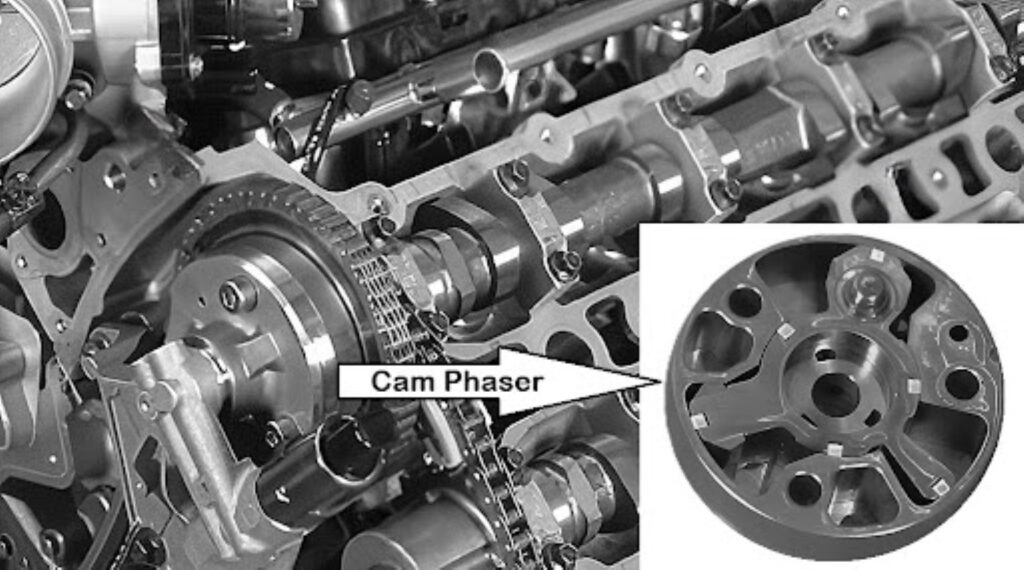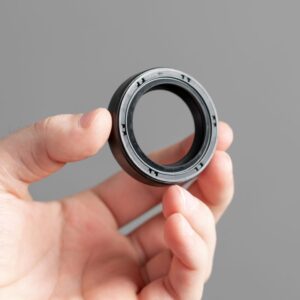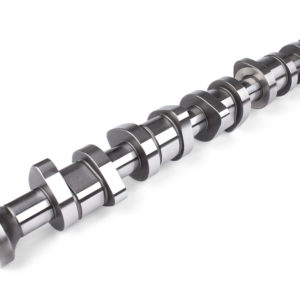Most modern engines have variable valve timing (VVT), a feature designed to change an engine valve timing. Like other systems, the VVT system has several parts, which can fail or develop issues over time. Understanding this system can be tricky, and questions can arise quite frequently. In this article, we’ll answer some frequently asked questions regarding the VVT system.
What Does VVT Do?
Engines without variable valve timing have a fixed relationship between the crankshaft and the camshaft. With variable valve timing, the indexing between the crankshaft and camshaft can be modified for maximum power and efficiency at every load and speed.

Engines without variable valve timing have a fixed relationship between the crankshaft and the camshaft. With variable valve timing, the indexing between the crankshaft and camshaft can be modified for maximum power and efficiency at every load and speed.
– Richard McCuistian, ASE Certified Master Automobile Technician
Is the Variable Valve Timing System Part of the Camshaft?
Yes. The variable valve timing system controls the valve timing by manipulating the camshaft. Technically, however, the VVT cam phaser is more a part of the camshaft gear than the shaft itself and can be replaced without replacing the camshaft. It bolts to the end of the camshaft just as fixed cam gear does.
What Is a VVT Solenoid and What Does It Do?
The variable valve timing solenoid controls oil flow to the camshaft phaser vanes and this is how the changes in cam timing are handled.
The cam phaser depends on the VVT solenoid to deliver the oil pressure that makes it work. It has a heavy spiral spring against which the oil pressure works and when the oil pressure is reduced, the spring works to default the cam gear to its non-advanced position.
The cam phaser rotates the camshaft to either advance or delay the valve timing depending on whether the VVT solenoid allows or cuts off oil flow.
How Common Is VVT Solenoid Failure?

VVT solenoid failure is quite common. A solenoid typically fails because of wear and tear. When this happens, the solenoid can get stuck in one position or can’t conduct current. The only way to fix a failed solenoid is to replace it. VVT solenoids can also fail when a vehicle overheats.
How Long Does Replacing a VVT Solenoid Take?
Replacing a VVT solenoid can take anywhere from five minutes to three hours, depending on its accessibility and the number of solenoids that need to be replaced.
Replacing the VVT solenoid involves removing the engine cover, which exposes the cylinder head and valvetrain components. Most VVT solenoids are mounted on top of the cylinder head, and removing them involves unscrewing some bolts.
What Do Other Manufacturers Call VVT?
Most modern vehicle engines have VVT because of the technology’s many benefits. However, most vehicle manufacturers call their VVT systems with different names.
For example, Audi has Valvelift, Toyota has Variable Valve Timing with Intelligence, and Honda has their famous VTEC, which stands for variable valve timing and lift electronic control.
Most vehicle manufacturers also have a unique name for their VVT systems since they aren’t identical. For example, Honda’s VTEC has variable valve timing and variable valve lift, which also changes how far the valves lift. Meanwhile, some manufacturers only do variable valve timing.
Where to Get a New VVT Solenoid for Your Vehicle
Driving with damaged or failed VVT solenoids might lead to more serious engine issues. It’s recommended to stop driving your vehicle until you’ve replaced the faulty solenoids. Luckily, ordering a dependable replacement VVT solenoid from CarParts.com takes only several taps on your mobile device’s screen.
Enjoy shopping for new replacement automotive parts online at CarParts.com. We offer a wide selection of variable valve timing solenoids for various makes and models. Finding the right VVT solenoid for your car requires plugging the year, make, model, and engine in our website’s built-in vehicle selector. Once you finish our ordering process, the distribution center nearest you will ship our on-hand parts to your doorstep. If you live in the continental US and send your order before 12 ET, you can expect the new VVT solenoid to arrive within several business days.
Make CarParts.com your one-stop shop for affordable and reliable VVT solenoids! Order a new VVT solenoid today and get the best deals on the replacement part!
Any information provided on this Website is for informational purposes only and is not intended to replace consultation with a professional mechanic. The accuracy and timeliness of the information may change from the time of publication.
































